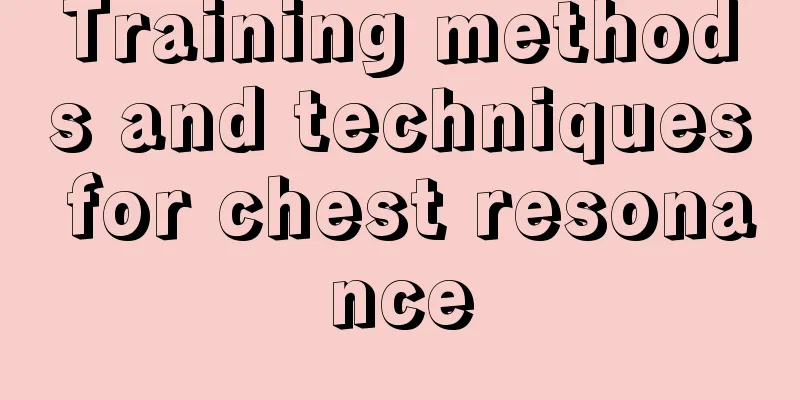Training methods and techniques for chest resonance

|
Many people may not understand the concept of "chest resonance", but those who like music or have studied music know that it is a method of voice training. It resonates through various organs of the body, such as the chest, nasal, oral and throat cavities. Resonance can beautify the voice. For an excellent singer, his pronunciation and singing are all based on resonance. So this is very important. So how do we contact each other in normal times? How to get chest resonance and master chest resonance training methods Chest resonance refers to the resonance of the lungs and the cavity in which they are located. When singing, the upper chest should be relaxed and the breath should be kept unobstructed. Use your upper chest as a resonance chamber. Let your chest expand in a relaxed manner as you inhale, rather than forcing it to open. Singing with your chest open and inhaling is a way to achieve good chest resonance. 1) Laryngeal relaxation exercises. Open your mouth slightly, relax your larynx, and make soft sounds or hum softly like a goldfish blowing bubbles, and feel the vibration of your chest. 2) Practice against a wall. Leaning against a wall can touch your back spine, making it easier for you to feel the breath moving forward along your back, and the resonance of your chest can resonate with the wall, making it easier for you to find the feeling of chest resonance. 3) When practicing, imagine your voice as upright, round and full. Close your mouth and make a "hmm" sound. Stretch out the "hmm" a little bit with emotion and you will feel your head and chest vibrating. 4) Choose vowel exercises that have a strong chest voice. Generally, it is easy to feel the chest resonance when pronouncing vowels such as "ou", "moo", and "hi". When making sounds, try to feel a "half yawn" in the throat cavity, allowing the sound to vibrate naturally around the trachea and larynx, then pass through the trachea to the chest cavity, creating a good chest resonance. During this process, the breath should flow evenly and impact the vocal cords softly. Avoid pressing the larynx in search of a broad, resonant sound, as this will result in guttural sounds. Skill 1. Experience the resonance of the chest cavity: open your mouth slightly, relax your larynx, close your glottis (vocal cords), make soft sounds like a goldfish blowing bubbles, or hum softly, and experience the vibration of your chest cavity. 2. Lower the position of the larynx: (same as above); relax the throat. 3. Opening the jaws: The so-called opening of the jaws means opening the upper and lower molars (molars). Leave space for oral resonance, and touch the position of the molars in front of the ear to see if they are open. Then make some vowel sounds, like "a". Feel the change in your voice. 4. Zygomatic muscle: When you speak with a smile, the corners of your mouth will slightly lift up, and you will feel your nostrils opening up. 5. Stick out your soft palate: yawn and let out a long howl. |
<<: Is it useful to take Sanjin tablets for acute cystitis? Can it cure it completely?
>>: Is silver powder poisonous?
Recommend
The left side of my head sweats but the right side doesn't
The left side of my head sweats but the right sid...
How long can you live with portal vein cancer thrombosis? These two aspects need attention
There is no uniform answer to how long a patient ...
Rectal cancer chemotherapy regimen
The chemotherapy regimen for rectal cancer includ...
What is the cause of eye socket and brow pain
The eye is a very fragile part of the human body....
What are the high-risk factors for gastric cancer? Pay attention to these four points
Gastric cancer is a disease with a very high inci...
Common causes of airway obstruction in patients with laryngeal cancer
Laryngeal cancer patients often experience breath...
How to get rid of pustular acne
Many people will feel that they have been having ...
Which foods are effective in lowering cholesterol?
High cholesterol is bad for health, so we need to...
How to prevent prostate cancer?
Diet plays a very good role in the prevention of ...
What causes cracked nails?
Under normal circumstances, the nails are relativ...
What are the methods for early diagnosis of lung cancer?
What are the methods for early diagnosis of lung ...
Brief description: Several common symptoms of brain cancer
Brain cancer is a malignant tumor that poses a se...
What does arrhythmia mean
Arrhythmia has become a common disease. The age l...
Does putting belly button stickers on babies with diarrhea work?
All babies will have diarrhea, which can be divid...
What to do if your dyed hair turns black
Hair dyeing is a process of dyeing a person's...









